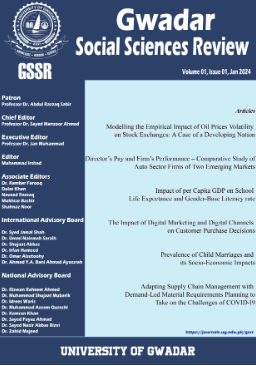Vaccine Hesitancy among University Students: A Qualitative Study in Makran Division, Balochistan
Keywords:
COVID-19 Pandemic, Vaccine hesitancy, University students, Makran DivisionAbstract
Although the government of Pakistan applied several undesirable consequences for the unvaccinated citizens, a very small portion of the population is fully vaccinated till now. That is very less as compared to its neighbouring countries such as China, Iran, and India. The most important reason of less number of vaccinated people is vaccine hesitancy in the country. The current study tried to know the reasons of vaccine hesitancy among undergraduate students in Pakistan, especially in Makran division. Balochistan has very little data regarding vaccination but vaccine hesitancy is worsening the situation. This research was conducted among the university students in Makran Division of Balochistan to find out the situation of hesitancy between both medical and non-medical students. The research focused on their ratio and the other basic causes of vaccine hesitancy. This study was both qualitative as well as quantitative in nature. The data were collected by developing interview schedules contained both structured and semi-structured questions. The participants were selected through purposive sampling techniques. After collection of data, the collected data were put in SPSS software and frequency, and percentage of data were drawn and also thematic analysis was used for qualitative data. The results found that the vaccination rate between medical and non-medical students was not that different. The outcomes of the study suggested that there were different causes of vaccine hesitancy, such as lack of knowledge, wild rumours and lack of trust among people regarding vaccination. It is recommended that the policy makers and government should develop trust among youth about COVID-19 vaccination.
Downloads
Published
Issue
Section
License
Copyright (c) 2025 Gwadar Social Sciences Review (University of Gwadar)

This work is licensed under a Creative Commons Attribution 4.0 International License.




